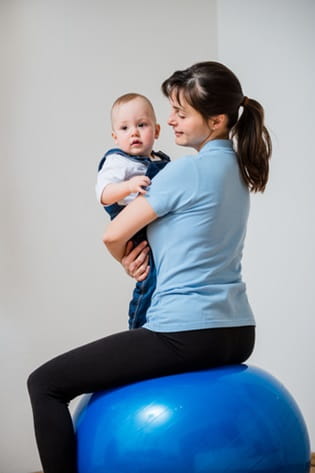Once your infant’s umbilical cord has fallen off (and the wound has healed, if your boy was circumcised), it’s time to transition from sponge baths to a baby bathtub. The Mayo Clinic says you could use a plastic tub or your sink – lined with a clean towel – for the bath, and it recommends that you have your bathing supplies, such as baby shampoo and a cup for rinsing, within reach so that one hand can remain on your little one during the bath.
Parents should be aware of two bath products that Consumer Reports says you shouldn’t use because of safety issues: infant bath seats and inflatable bath tubs, which are both made for use in regular bathtubs. With infant bath seats, adults might get a false sense of security and possibly turn their back on the infant for a few minutes, and inflatable tubs could collapse or they might tip over if placed into a regular tub that’s filled with water, according to Consumer Reports.
Here are other safety tips from the Mayo Clinic and Consumer Reports:
- If you’re using a regular tub or a baby bathtub, always turn off the hot water first and beware of hot metal spigots. Also, buy a soft plastic cover for the spout of your bathtub, which can protect your baby from the spout’s hard edges and heat-conducting metal.
- Never leave your infant alone in the water. Take your baby with you if you need to leave the bathroom.
- Two inches of water is the commonly recommended amount to put in the tub, and warm – not hot – water is best. You can prevent scalding by setting your water heater’s thermostat to below 120 degrees F. You should always use your hand to check the water temperature before the bath; around 100 degrees F would be adequately warm.
- To keep your infant from getting chilly, keep the room warm and pour warm water over her body during the bath.
- Use a secure hold to keep your baby comfortable and safe in the tub. Support your infant’s head and neck with your nondominant arm, while your other arm holds and guides her body feet first into the water. Make sure you continue to provide support for her head and neck during the bath.
- Use washcloths rather than sponges. Small pieces of a sponge can break off easily and then become choking hazards for your infant, and sponges can contain bacteria.
- After each bath, always empty the bathtub right away because a baby or child can drown in less than one inch of water.




